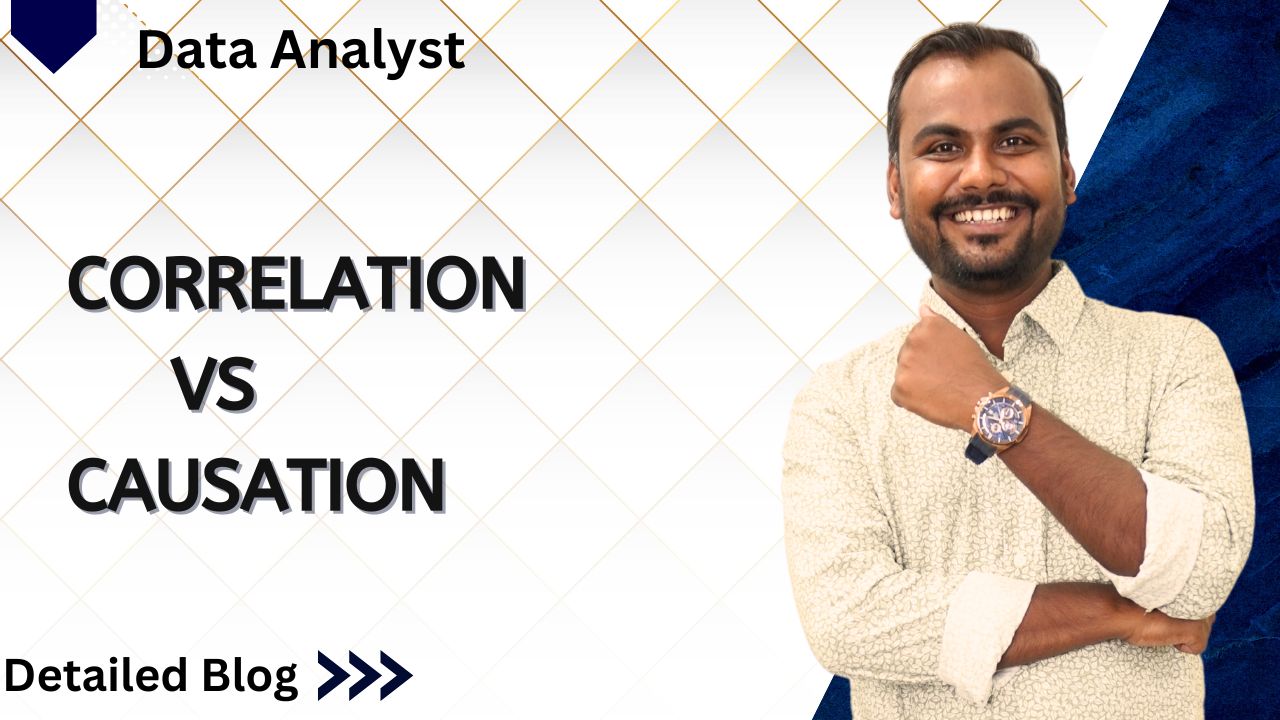Correlation vs Causation in Data Analytics
Understanding Correlation vs Causation in Data Analytics
In data analytics, identifying the right relationships in data is crucial — but not every relationship means cause and effect. Understanding the difference between correlation and causation is key for accurate analysis and decision-making.
If you’re pursuing the Google Data Analytics Course, SQL Certification, or learning Python Programming, mastering this concept will help you become a stronger analyst who can separate coincidence from true influence.
What Is Correlation?
Correlation measures how two variables move together. It’s a statistical relationship where changes in one variable are associated with changes in another — but without proving any cause.
For instance, sales might rise as marketing spend increases — a positive correlation. Alternatively, temperature and heating usage might show a negative correlation (as temperature rises, heating usage drops).
You can calculate correlation easily in Python using libraries like pandas or numpy, or in SQL using correlation functions within analytic queries. However, correlation only measures association — not causation.
What Is Causation?
Causation, or cause-and-effect, means one variable directly influences another. For example, launching a marketing campaign might cause a rise in sales — if other factors (like pricing and seasonality) are controlled.
Establishing causation requires experimentation, statistical modeling, and critical reasoning — topics covered in both the Google Data Analytics Course and advanced Python Programming tutorials.
In practice, analysts use techniques like A/B testing, linear regression, and time-series modeling to validate causality.
Correlation ≠ Causation: A Real-World Example
Consider this scenario: ice cream sales and drowning incidents both rise during summer. Does that mean ice cream causes drowning?
Of course not. The real cause is hot weather, which increases both swimming and ice cream consumption.
This example illustrates why analysts must investigate deeper using data visualization, statistical testing, and SQL queries to find the true influencing factors.
How to Identify True Causation
Moving from correlation to causation requires a structured approach:
-
Use controlled experiments (A/B testing) to isolate variables.
-
Apply regression analysis in Python or R to measure influence.
-
Conduct time series analysis to track variable relationships over time.
-
Segment data using SQL to test patterns across different groups.
The Google Data Analytics Course and SQL Certification programs train learners in these methods, ensuring they can extract meaningful, actionable insights.
Why This Concept Matters
Mistaking correlation for causation can lead to wrong business conclusions — and wasted investments. For example, assuming higher website traffic causes sales growth might ignore the real driver, such as promotional campaigns.
Understanding this distinction helps analysts using Python Programming or SQL create data-driven models that are reliable, explainable, and business-relevant.
In professional analytics roles, this skill separates data users from true data scientists.
Key Takeaways
-
Correlation shows a statistical link; causation proves a direct effect.
-
Always watch for confounding variables that might explain patterns.
-
Use SQL, Python, and experimental methods to validate insights.
-
The Google Data Analytics Course, SQL Certification, and Python Programming collectively build this analytical foundation.
Conclusion
Understanding the difference between correlation and causation is one of the most important analytical skills for anyone working with data. While correlation helps identify relationships, causation digs deeper to uncover the why behind the numbers. Analysts who can distinguish between the two make smarter, data-driven decisions and avoid costly misinterpretations.
At Learnomate Technologies, we make sure you not only understand such cutting-edge features but also know how to implement them in real-world projects. Whether you’re a beginner looking to break into the database world or an experienced professional upgrading your skillset—we’ve got your back with the most practical, hands-on training in Oracle technologies.








Let’s keep learning, exploring, and growing together. Because staying curious is the first step to staying ahead.
Happy learning!
ANKUSH


